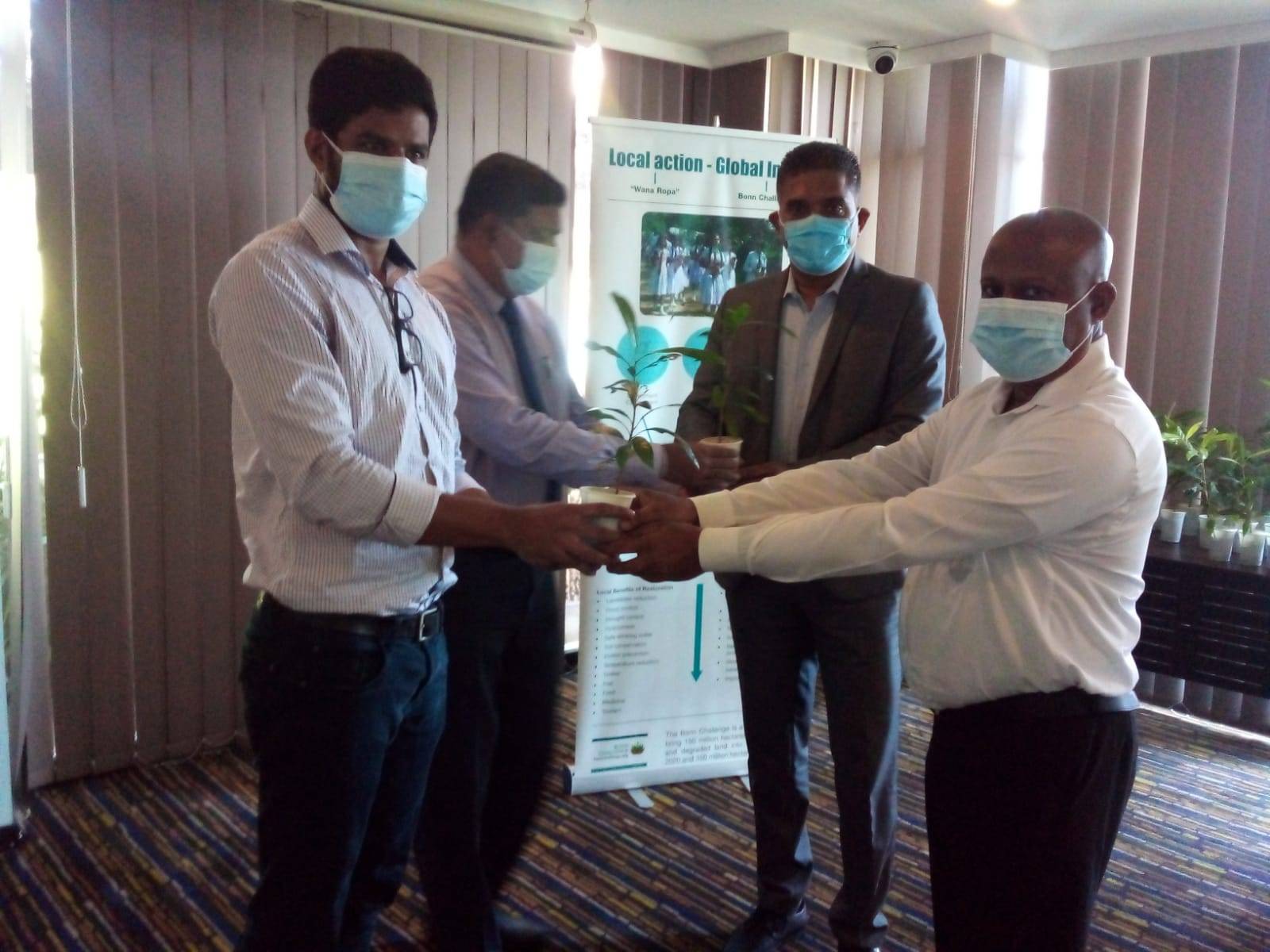
Cinnamon Lakeside goes green supporting the LIFE Kanneliya Project
BSL’s Member Cinnamon Lakeside Colombo gifted 320 Mee plants to BSL’s flagship project “LIFE” – A landmark public-private initiative to restore a degraded fern land in Halgahawala, Opatha, within the Kanneliya Forest Reserve.
Employing principles of restoration ecology, LIFE will restore the rain forest, enhance ecological functions, habitat quality, species diversity, and the capacity to provide biodiversity and ecosystem services. A Biodiversity Credit Accrual System for Sri Lanka will also be developed in parallel to LIFE, ultimately assigning a unit value for the enhancement of biodiversity and ecosystem services, resulting from the ecological restoration. A Bio Register will be established to record credits accrued by nationally significant restoration activities.
On the recommendation of Mr. Kamal Munasinghe, General Manager of Cinnamon Lakeside Colombo and Cinnamon Grand Colombo, 320 Mee saplings were handed over to the reforestation project in Kanneliya, which was initiated by the Biodiversity Sri Lanka and IUCN Sri Lanka, on February 1, 2022. For this purpose, Mr. Nalin Munasinghe – Programme Coordinator, IUCN Mr. Naalin Perera – Programme Officer – Biodiversity, IUCN, and Mr. M. M. Hanan Public Relations and Communications Coordinator of BSL were present at this ceremony.
Cinnamon Lakeside Colombo is a hotel dedicated to environmentally friendly methods. The hotel places a strong emphasis on the three pillars of sustainability: social, environmental, and economic. The hotel crew is spearheading the tree-planting effort, which includes everything from seed collection to growing and planting seedlings to project management and monitoring planting sites. This initiative began in the second half of 2019, and the team stayed in the hotel to attend for the plants even during the country’s lockdown times.
During the partner field visit on February 3rd, 2022, the plants were taken to the restoration site and ceremonially planted by hotel staff.
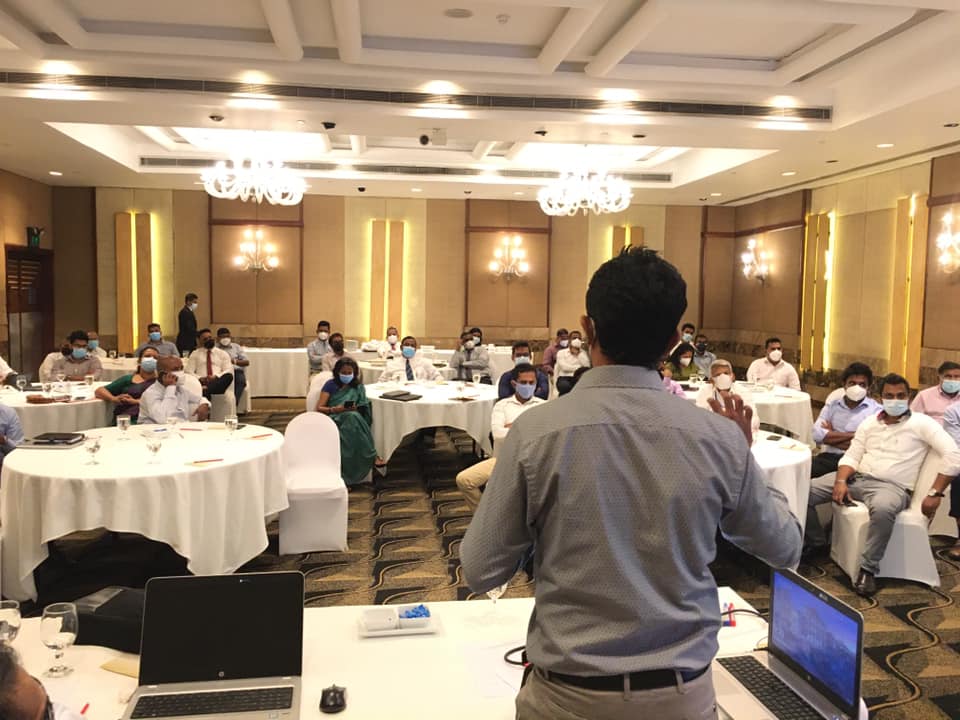
Moves to establish and operationalize private sector consortia to facilitate EPR implementation
At the global level, Extended Producer Responsibility (EPR) systems are successfully implemented through a participatory process called Producer Responsibility Organizations (PRO). In Sri Lanka, knowledge and understanding among stakeholders on successful EPR models implemented in other parts of the world are currently inadequate. Following the EPR Roadmap, the Ceylon Chamber of Commerce (CCC) together with the Ministry of Environment, the Central Environmental Authority (CEA), and Biodiversity Sri Lanka (BSL) have taken steps to implement EPR for plastic waste voluntarily targeting PET and HIPS through a project supported by USAID’s Clean Cities Blue Ocean Program.
At the outset, two private sector consortia have been developed through extensive consultations with corporate entities involved in importing, manufacturing, and using Poly-ethylene Terephthalate (PET) and High Impact Polystyrene (HIPS) respectively, in order to coordinate collect-back/recycling of plastic packaging in Sri Lanka. The private sector consortia have initially been established under the auspices of the CCC and BSL, with a view to subsequently incorporate as PROs. The main role of the two private sector-led consortia would be to support the realization of annual collect-back targets to be assigned by the Plastic Expert Committee (PEC) of the CEA in close collaboration with all relevant stakeholders. Assigning annual collect back targets will be based on volumes of plastics consumed by corporates. The project will create the necessary enabling environment in collaboration with relevant Government Agencies. This includes establishing an online Plastic Waste Reporting System and developing a verification system for EPR on plastic waste management. The consortia will operate on a not-for-profit basis.
Membership of the private sector consortia is open to brand owners, plastics importers, and packaging manufacturers dealing with PET and HIPS. Calling for membership is ongoing through relevant sectoral associations and public advertisements. In order to facilitate collection and recycling programs efficiently, the project will encourage tri-partite partnerships amongst corporates dealing with PET and HIPS, collectors, and recyclers, which will eventually enable the achievement of assigned collect-back targets.
The two private sector consortia will offer multiple benefits to its membership. They will support the generation of economies of scale, the reduction of EPR costs for individual companies, enhancing collective bargaining power, and adopting a high-impact country-focused, solution-oriented approach to plastic waste management, which will be more efficient and effective compared to the present CSR and marketing led collection/recycling initiatives confined to a few leading corporates.
The project will facilitate many functions of the private sector consortia such as acting as the interface between the CEA and the private sector, promoting membership in the consortia, coordinating the achievement of EPR collect-back targets assigned to its membership, facilitating incentivization collectors/recyclers by brand owners, importers, and manufacturers, ensuring data collection and verification of collect-back/recycling volumes, and reporting to the PEC of CEA on an annual basis, on behalf of its membership.
Furthermore, the project will implement directives received from the Project Steering Committee (PSC) established to oversee the overall implementation of the Project, undertake awareness campaigns to educate the public on responsible waste disposal, with a view to an increasing collection of post-consumer plastic waste and obtain and collate information and intelligence on the gaps, infrastructure needs, and other requirements to be supported to popularize collect back/recycling of plastic waste from industries and households. The two consortia will initially be advised and guided by the PSC.
Recently, identified entities in the PET and HIPS domains were invited to join as members of the PET and HIPS consortia. More than 31 companies, including key market leaders, have already joined the PET consortium. Most notably, when it comes to soft drinks market share, the PET consortium has already covered more than 70% of PET usage in Sri Lanka. More companies are currently joining both consortia. Cargills Ceylon PLC, which is one of the largest conglomerates in the country has already joined the HIPS consortium.
There are a number of SME-type water bottlers that operate in isolation and are geographically dispersed all over the country. These SMEs are not connected to any of the national-level policy dialogues. Even though their PET usage is insignificant and incomparable with other medium to large-scale PET users, the project has been making attempts to educate and engage them into the EPR system.
The 2nd PET and HIPS Consortia meetings were conducted in February with around 50 manufacturers, users, and brand owners in attendance. Overall, the participants were enthusiastic about engaging in discussions and they maintained a positive view towards the implementation of EPR on plastic waste in a voluntary basis soon. This consortia-based EPR implementation on plastic waste could be considered a trailblazing achievement, not only in Sri Lanka but also for the South Asian Region.
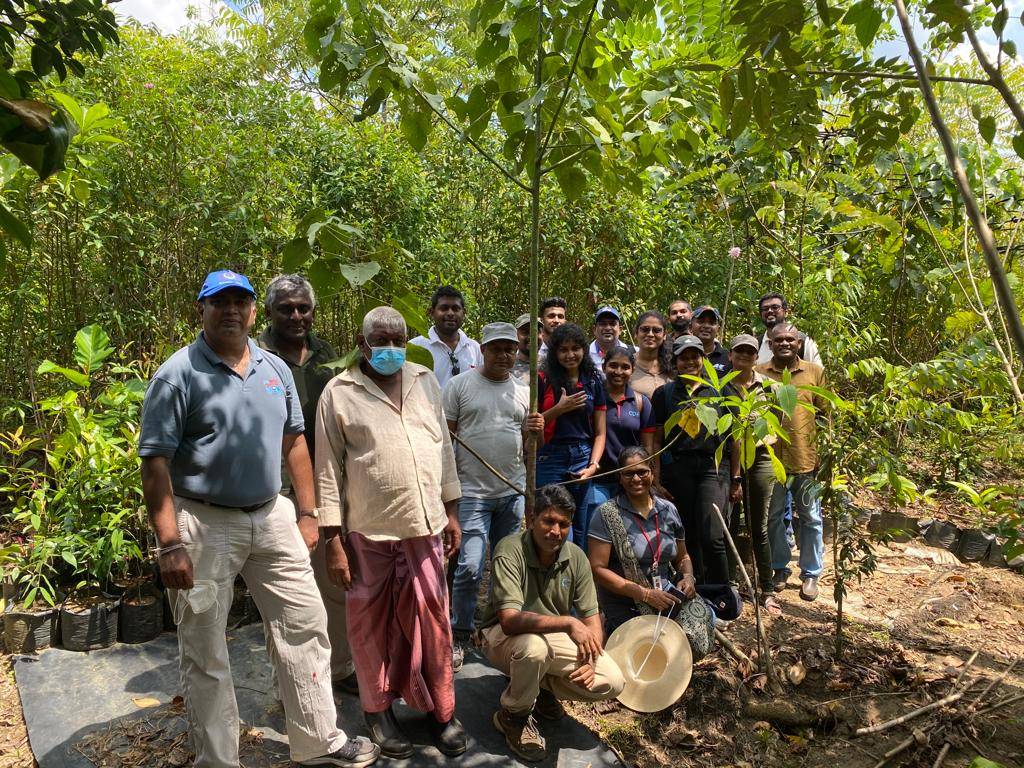
LIFE – Kanneliya project partners engage in site visit
Following multiple setbacks caused by the COVID 19 outbreak, BSL planned a field visit to the LIFE project site with the help of IUCN. LIFE is a groundbreaking public-private effort in Halgahawala, Opatha, within the Kanneliya Forest Reserve to restore a degraded fern land. The visit was arranged to demonstrate progress and the most significant milestones achieved during the years of implementation. The project has just completed its fourth year.
LIFE aims to pilot test the feasibility of restoring a completely degraded rainforest patch within the Kanneliya Conservation Forest in Southern Sri Lanka. The site has been cleared for cultivation and subsequently abandoned, resulting in its colonization by the pioneer fern species Dicranopterus linearis (Kekilla). In the past, the Forest Department has tried to restore this site by planting Eucalyptus trees which has not been successful. Thus, LIFE has undertaken to restore a 10-ha extent of this degraded forest patch, using principles of restoration ecology, to enhance its ecological functions, habitat quality, species diversity, and capacity to provide biodiversity and ecosystem services that are in close approximation to what prevailed there, before it was converted to its present state.
During the visit IUCN technical staff explained about the overall progress. Since the initiation of ground-level activities of the project in April 2018, several key achievements have been reached, regardless of the challenges posed by rugged terrain, poor access to the site, erratic climate patterns, and most recently the COVID-19 pandemic. The completed activities include ground preparation, fencing of the site, planting, and the systematic collection of information for the development of the Biodiversity Credit Accrual Scheme (BCAS). To protect the new plants from herbivores roaming the area, a fence of 1,400m in length was established encircling the entire project site. Concrete posts of 5’ height and barbed wire were used for this purpose. In addition, expansion of the intensive restoration area beyond that accomplished during the third year, application of organic fertilizer, planting of shade plants and forest plants, maintaining the fence, nursery management, watering and protecting plants from herbivores were carried out during the reporting period.
A nursery was established on-site, to maintain the seedlings until they are planted. To avoid plants from catching (forest) fire in the dry season, a 6’ wide fire belt was established by removing the Kekilla. Shade plants namely Glyricidia sp., Erythrina sp. “Kenda” and native species including “Hora”, “Goraka”, “Kata Kaela”, “Wal Del” and “Nawanda”, were also planted. The plants were obtained from local communities and the Forest Department. The plant nursery established by the project currently maintains more than 3,500 plants. Plants are transferred to the field on a regular basis. Hence, the nursery is being continuously improved to ensure an un-interrupted source of seedlings for planting. Seeds and seedlings are collected from the adjacent forest area for gap filling, potted in bags, and raised in the nursery until they are ready to be transferred to the field.
Field staff also explained about a significant method of application fertilizer, soil conservation and improvement methods and dry season watering.
Soil tests conducted by the Soil Science Department of the University of Peradeniya confirmed the highly degraded status and poor nutritional condition of the soil at the restoration site. As such, as per initial recommendations received, the application of fertilizers was initiated. Compost, organic pellet fertilizer, inorganic fertilizer, and dolomite were used systematically and carefully due to the sensitive nature of the site. Phosphate and nitrate tests were conducted with samples taken from the site and from an adjacent location. The tests revealed zero impact of the application of inorganic fertilizers to the forest and stream ecosystems of the area.
Soil plays a critical role in forest restoration as poor-soil suppresses plant growth. Due to heavy soil erosion and subsequent invasion of Kekilla, together with forest fires, have caused the soil condition in the site to been very poor. During the reporting period, several actions such as the introduction of live fences, soil conservation bunds, and barriers, the introduction of legume species, were carried out to improve the soil condition.
A watering system was established to ensure a continuous supply of water to plants during the dry season. Clay pitchers are placed next to selected plants located in the dry, hilly areas of the site to ensure water availability to plants during dry times. Also, a layer of coir or coconut husks were added to the planting pits, to retain moisture conditions for a longer period of time.
Representatives from partnering companies expressed their appreciation for the progress made over the last few years. Among them it was Senal Siriwardene from Jetwing who said “over the past years we see marked differences with the efforts put in here that have made a massive difference to the environment and lot of the native vegetation are being put in, pushing the fern cover back. It’s a winning moment for us and all involved in this project”.
Arrangements are being made to sustain the site with the involvement of the project partners, after the fifth and final year of this phase.
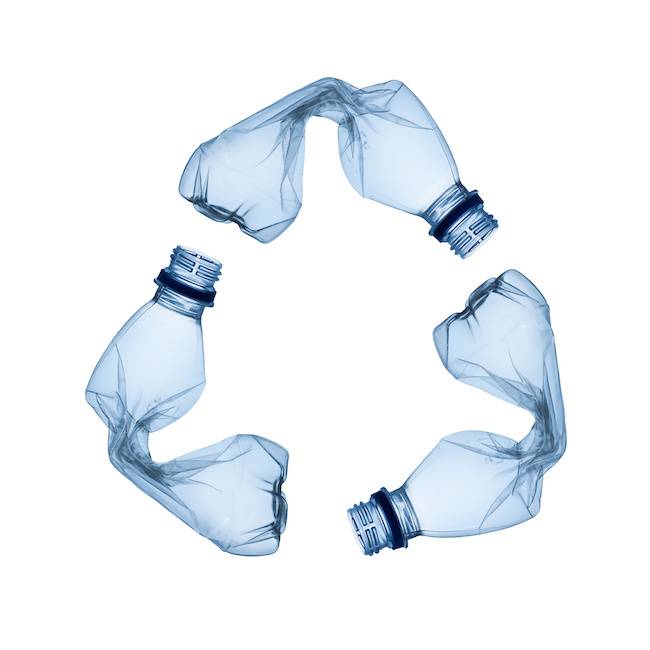
Material Recovery Facility: is it a game changer in plastic waste collection in Sri Lanka?
There are a number of plastic waste recyclers/processors successfully operating commercial operations converting plastic waste into marketable products. Existing processors have a substantial capacity to recycle plastic waste released into the market/environment and are willing and planning to expand their processing capacity. Though lack of accurate and reliable data on plastic use, volumes of plastic products in circulation, and the quantity of plastic waste collected in Sri Lanka are serious issues, it is estimated that around 20% of PET and 3% of HIPS are being collected at present. As per senior officials at the Central Environmental Authority, both formal and informal private sector actors in the plastic waste sector do not report on the quantities of their plastic waste collection and recycling at the moment. As the plastic recyclers are operating below capacity, increasing the collection of post-consumer plastic waste, and channeling them to reliable recycling operations are considered most crucial.
A framework for plastic waste collection has been developed through the project “Enhancing Extended Producer Responsibility (EPR) through a Public-Private Partnership Approach” which is being implemented by the Ceylon Chamber of Commerce (CCC) with the technical assistance of Biodiversity Sri Lanka (BSL). The purpose of the project, which has received the official endorsement of the Ministry of Environment (MoE), is to implement an EPR system for plastic waste on a voluntary basis which was developed using a consultative process by CCC and BSL, through USAID’s Municipal Waste Recycling Program (MWRP).
The overall objective of developing the Plastic Waste Collection Framework is to increase the collection and recycling of post-consumer plastic packaging in Sri Lanka, using a partnership approach. It also aims to examine the currently existing collection mechanisms and propose a common collection framework to streamline and strengthen plastic waste collection in the country, making recommendations to ensure successful execution.
Existing Plastic Waste Collection Options
The placement of waste collection bins is a common practice to facilitate and encourage responsible disposal of used plastics by consumers. A number of organizations particularly corporates such as Coca-Cola, John Keells (Plasticcycle), and Eco Friends have already placed waste collection bins in schools, supermarkets, hotels, temples, commercial establishments, expressways and many private sector companies have planned to support waste collection through this mechanism. The application of innovative mobile apps by Local Government Authorities (LGAs) to streamline waste collection is a recent breakthrough in Sri Lanka, since thus far, LGAs have relied only on traditional methods for waste collection. These Apps contain useful features including viewing the locations of garbage trucks, types of waste accepted and enables direct communications between officials and residents as well as allows posting of complaints.
There are a substantial number of more organized waste collectors, who have been registered with the Central Environment Authority (CEA) and/or the Western Province Waste Management Authority. (WP-WMA). Though, there is no huge variation in the scale of operation between the informal waste collectors and the registered waste collectors, the registered collectors can be considered as more organized as they are linked with regulatory authorities, thus having more access to information, guidance, and advice on proper waste collection practices.
Innovation in Plastic Waste Collection
Materials Recovery Facilities (MRFs) is a somewhat novel concept for Sri Lanka. The establishment of MRFs is aimed at collecting all types of waste at a central location, making waste collection more efficient and effective, allowing for increase of economies of scale as well as the ability to use new technologies for more efficient waste collection operations. The establishment and operation of MRFs are carried out as joint initiatives of corporates/brand owners and recyclers, which help recyclers to continue their waste processing operations efficiently, whilst providing opportunities for corporates/brand owners to fulfil their EPR responsibilities
Based on the trend in the recyclable waste collection market in Sri Lanka, the establishment of an integrated waste collection network which is primarily based on MRFs is proposed. Even though prominence is given to MRFs in the proposed integrated network, setting up of collection centers and other types of collection methods in peripheral areas are also encouraged and promoted as MRFs alone might find it challenging to meet high volume requirements, which is essential to cover the significantly high initial and operational cost of the MRFs.
The market entry to set up MRFs for collecting recyclable waste should be kept open to any interested new comers, without any entry barriers. It is essential for MRFs to work closely with existing and potentially new local level actors in each location in order to support local plastic waste collection efforts and livelihoods while ensuring that their collection volumes are fulfilled and they are at full operational capacity. Further, the proposed MRF-centered network is not considered a competing force against existing waste collection facilities such as collection centers. Moreover, the high cost of transportation of collected plastic waste, which is borne by informal and semi-organized actors at the moment, can get reduced through the proposed MRF network as collectors could deliver their collection to MRFs without transporting them to leading recyclers in Colombo.
Through careful assessment of existing collection mechanisms and based on the consultations with key players in the plastic waste value chain, there is general consensus that the most sensible and practical approach for increasing waste collection is to develop an integrated waste collection framework i.e. MRF Network, by strengthening existing collection mechanisms with closer and mutually beneficial linkages between the various actors in the value chain.

Biodiversity Sri Lanka launches its Second Public Private Community partnership – Life to Our Mangroves
The project ‘LIFE To Our Mangroves’ was officially launched on the 7th of February 2022 by Biodiversity Sri Lanka and its members. A simple function was held at the lawn of Dilmah Ceylon Tea Company PLC in Peliyagoda. Due to the prevailing health crisis, the secretariat hosted an outdoor event following the health guidelines with limited participation.
This is BSL’s second public-private community partnership. The project will generate multiple environmental as well as socio-economic benefits. Overall, the intervention will enhance the resilience of the mangrove ecosystem, its capacity for renewal, and the provision of ecosystem services, whilst contributing to the socio-economic development of local communities.
BSL signed Partnership Agreements with Citizens Development Business Finance PLC, Dilmah Ceylon Tea Company, Dole Lanka (Pvt.) Ltd., Dynawash Ltd., Eswaran Brothers Exports (Pvt.) Ltd. and National Development Bank PLC – all BSL members who will engage in this endeavor.
On the 12th of December 2021, Biodiversity Sri Lanka and the Department of Wildlife Conservation (DWC) exchanged a Memorandum of Understanding (MoU) to carry out this project. Mr. M. G. C. Sooriyabandara, Director-General of the Department of Wildlife Conservation, and Mr. Chandrarathna D Vithanage, Director of Biodiversity Sri Lanka, signed the document at the Department of Wildlife Conservation.
Known as ‘the Lungs of the Sea’, mangrove ecosystems provide critical services for the maintenance and wellbeing of global biodiversity. They are also of equal importance to humans living in the tropical belt, in terms of the ecosystem services that they provide, and the options offered by them as livelihoods to the major proportion of populations that live in the coastal zones of the region. In the context of the single-most debilitating challenge that humankind faces currently, mangroves play a significant role in fighting climate change as unique and productive Carbon sinks, and by acting as a protective barrier for human settlements, against heightened natural disasters resulting from increased global temperatures. Therefore, there is special and increased focus being laid on the conservation and wise use of mangrove ecosystems around the world.
Mangrove ecosystems cover a land area of 0.23% of the total land area of Sri Lanka. In order to prioritize the protection of these mangrove forests, and more so urgently – a national policy to conserve and sustainably utilize mangrove ecosystems in Sri Lanka, was approved by the Cabinet of Ministers in March 2020.
Anaiwilunda Wetland Sanctuary, which covers an area of 1,397 ha, consists of forest wetlands including mangroves, coastal saltwater ecosystems, and freshwater lakes. It is located along the coastal belt between Chilaw and Puttalam in the Northwestern Province of Sri Lanka. It is one of Sri Lanka’s six RAMSAR wetlands. The sanctuary provides shelter to a host of threatened fish, amphibians, mammals, reptiles, and many migratory birds.
From 44.5 ha of degraded mangrove forest patches within the sanctuary, the DWC has agreed to guide Biodiversity Sri Lanka in initially restoring up to 25 ha, using accepted scientific principles within a period of five years. BSL Members will play an active role in this effort. The first two years will focus on planning, forging community partnerships, land preparation, nursery establishment, and planting activities. Years three-five will be allocated for gap filling and maintenance. Activities will be guided by IUCN’s Global Nature-based Solutions Standard. Baseline monitoring for the entire site is being undertaken by the DWC and monitoring of the BSL site will be in keeping with this overall M&E process.
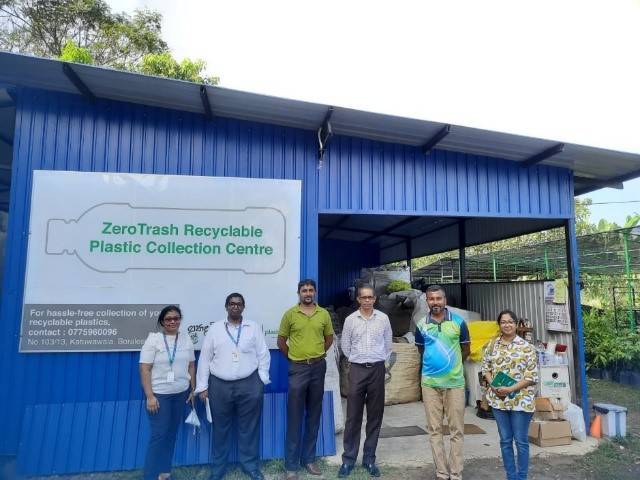
The Application Of Extended Producer Responsibility (EPR) Instruments To Manage Plastic Waste In Sri Lanka
On the invitation of the Central Environmental Authority (CEA), the Ceylon Chamber of Commerce (CCC) and BSL took part in a meeting to discuss the implementation of EPR for Plastic Waste management on January 6, 2021, at the CEA. The main purpose of this dialogue was to examine the pros and cons of two major EPR instruments: Product Take-back Requirement and Deposit Refund System. The Managing Director, Snackings (Pvt) Ltd shared a proposed Digital Deposit Refund System (DRS). As per the system proposed, PET bottles will carry a QR Code and consumers will be able to obtain a refund by handing over the used bottle to nominated outlets. For the return of these bottles, it is proposed to set up 5,000 outlets throughout the country. The consumers can return the bottles to these outlets and obtain a refund of LKR 10/-. On top of that, an EPR fee will be levied from brand owners to set up and maintain the system. During this discussion, it was emphasized that the country should focus on bottle-to-bottle recycling as it happens in other countries.
Mr. Chandrarathna Vithanage, Senior Assistant Secretary-General, CCC explained that CCC has facilitated the EPR dialogue for over 3 years and come up with the EPR Roadmap, proposing a Mandatory Reporting and Collect Back model which will assign a collect back target to brand owners based on their annual packaging consumption. The development of this EPR Roadmap was done adopting a broad, consultative process. CCC also conducted a Perception Survey on EPR through which, it was revealed that over 90% of the private sector stakeholders are in favour of this model and expressed willingness to implement it. He pointed out that plastic waste is an issue of national importance, and therefore it must be tackled diligently keeping national interests for environmental conservation in mind.
Mr. Roshan Salinda, Program Manager, BSL commended positive elements of DRS and acknowledged that DRS has delivered laudable results in raising PET collection and recovery rates in developed countries such as Germany, Norway, Denmark, and Lithuania. However, he pointed out that in no developing country where informal waste collection systems exist, has introduced DRS for PET packaging. When DRS is introduced, valuable waste items like PET, Aluminium cans, and glass will also get collected through the system, affecting the livelihoods of thousands of informal waste collectors, as PET contributes to a sizable portion of the income of informal waste collectors. Also, Sri Lanka’s socio-economic dynamics are not conducive for introducing DRS. As such, since Sri Lanka has a very active waste collection sector, DRS would unlikely be the best EPR model for the country. Citing an OECD report, he mentioned that Product Take Back requirements are the most dominant EPR tool used in the world. Sri Lanka can draw lessons from proposed EPR regulations in India. The main elements of Indian EPR regulations are mandatory registration of producers and recyclers, and targets for plastic waste collection, recycling, and the use of recycled content in packaging. He concluded that introducing DRS would have to be discussed widely with the private sector, as the Collect Back Model is currently being operationalized in the country with private sector agreement.
BSL and CCC teams visited SME member Zero Trash, General Member Eco Spindles to gather further information on the collection and recycling of plastic waste.
The 3rd Project Steering Committee meeting of the CCBO-CCC EPR Pilot Project was held recently under the leadership of the Secretary of the Ministry of Environment and the CEO/Secretary General of the CCC

BSL Hosts “Beyond Borders” in Association With GIZ and DWC
A webinar was held on 27th January 2022, to showcase successful private sector-led efforts in contributing towards protecting critically important ecosystems through a livelihood-centered approach in the Wilpattu National Park’s (WNP) influence zone. The event focused on lessons learned and best practices implemented by the supporting WNP and influence zone management project in Sri Lanka.
Biodiversity Sri Lanka (BSL) was hired by GOPA Worldwide Consultants to co-ordinate private sector investments in connection with the activities falling under outputs c) and d) of the Project, namely, the local population in the park’s influence zone has better access to alternative, resource-friendly income-generating opportunities outside conventional agriculture and the use of the national park as a communication instrument for the purpose of raising environmental awareness and promoting peaceful co-existence has improved.
At the outset, two keynote addresses were delivered by Mr. Sharada Sosa, Director, Forbes & Walker Fine Foods (Pvt.) Ltd. and Ms. Shamodi Nanayakkara, Manager, Dilmah Conservation, on the topics ‘The Story of Cashew: Farmers, Middlemen, and Escapeways’ and ‘Women-led Community Skills Development in the Influence Zones of High Conservation Value Forests’ respectively. Session II was a panel discussion, featuring a diverse array of eminent panelists representing the business sector, science and conservation education, and academia and included Dr. Anura Indrajith, Department of Applied Entomology, University of Rajarata, Ms. Chandani Wilson – Deputy Director Visitor Services Management, Department of Wildlife Conservation, Mr. L. P. D. Dayananda – Consultant/Agricultural and Business Development Specialist of BSL, and Mr. Nirmal Hettiarachchi – Technical Head, Fresh Produce of John Keells PLC. The discussion was based on innovative business actions and approaches, income-generating business solutions, linkages between policy and legislative frameworks, and focused on successes and challenges.
More than 80 participants attended this very informative session, which provided many insights on involving the private sector in protected area management in the country. Despite the multitude of challenges faced, overall, the Project successfully implemented its ground-level activities. One of the biggest challenges was Covid19 related restrictions. One of the other challenges was the relatively short time span available for the implementation phase, which provided very limited time and opportunity for BSL to build a strong rapport with the private companies and the target communities. However, BSL by undertaking back-to-back field visits and through its field coordinator managed to interact with the target groups closely and openly forging many interesting private sector linkages.
The project concluded with the observation that potential exists for mutually beneficial buyback programs for agricultural produce via location-based associations/small informal groups and/or through lead farmers, and interested private sector, lending sustainability and marketing independent of middlemen. There is a need to continue a similar momentum at least for another year to forge stronger links with the farmers and the private sector, to derive effective mutual benefits and wean farmers away from encroaching further into the influence zone of the park.
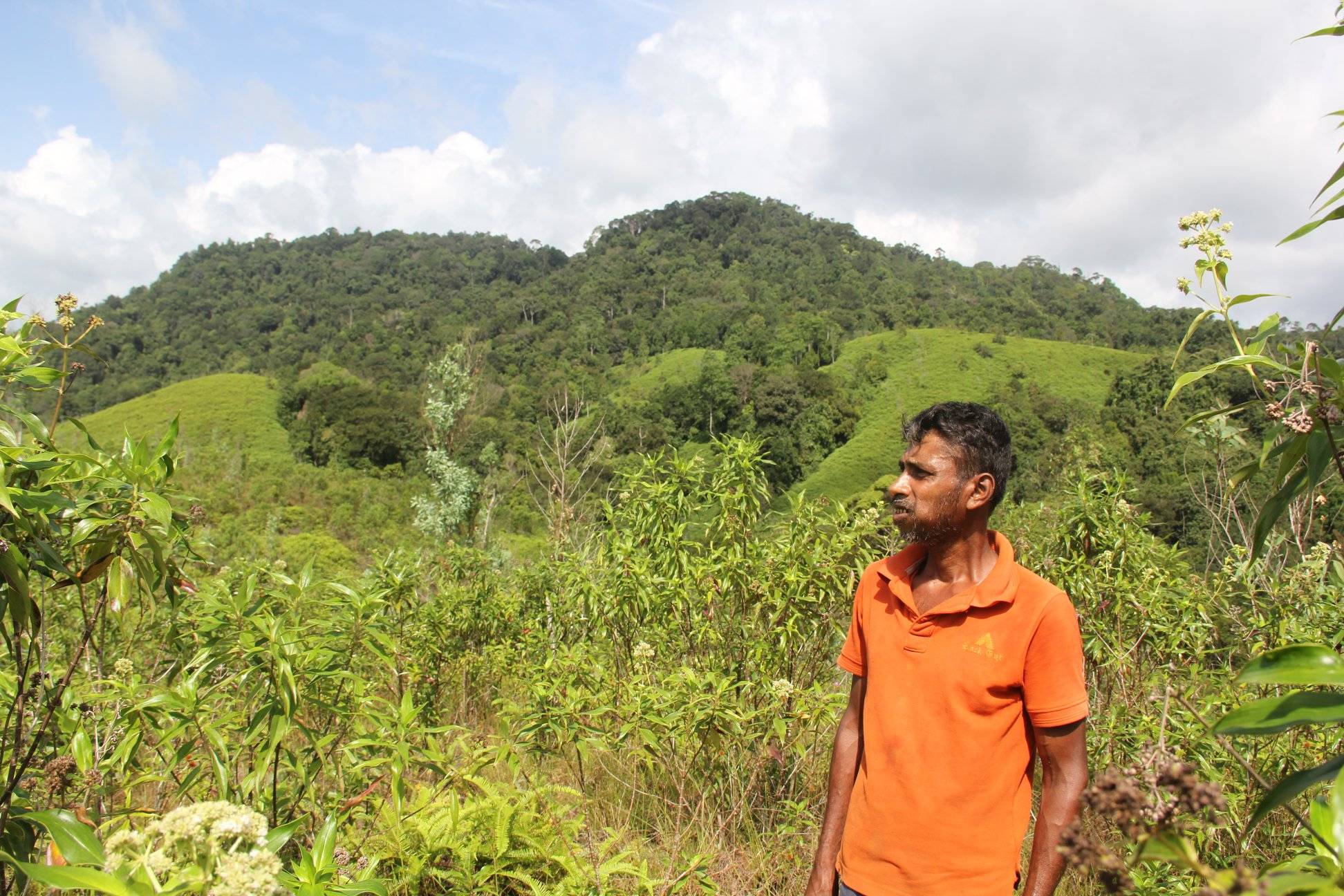
BSL collaborates with UNDP and CEJ in designing a digital citizen engagement platform for reporting illegal environmental activities
The proposed project idea is a digital citizen engagement tool, which aims to connect citizens wishing to report unsanctioned environmental activities to government officials. The project will be in two phases – Phase 1, focusing on illegal deforestation and logging activities only, in collaboration with the Forest Department and Phase 2 – scaling up to include other illegal environmental practices, such as illegal wildlife poaching and trade and illicit activities contributing to wetland degradation, in collaboration with the Department of Wildlife Conservation, the Customs Department, and other relevant government institutions.
The tool will facilitate a two-way portal, whereby citizens can take the initiative to report against harmful environmental practices and contribute towards crowdsourcing data on this. The tool will also allow citizens to track whether their complaint has been resolved. Officials will be able to obtain the information required to address such concerns and be able to use the record and inform other officials of complaints and issues that come to their attention via offline methods.
A preliminary meeting of the technical experts’ committee was held in January at the Ministry of Wildlife and Forest Conservation. Members of the committee representing various Government, Private Sector, and Civil Society institutions emphasized the need for a user-friendly solution, and the need to establish clear parameters for the pilot and subsequent phases of the proposed intervention. The meeting was chaired by Mr Ratnayake, Additional Secretary (Technical) of the Ministry of Wildlife and Forest Conservation.
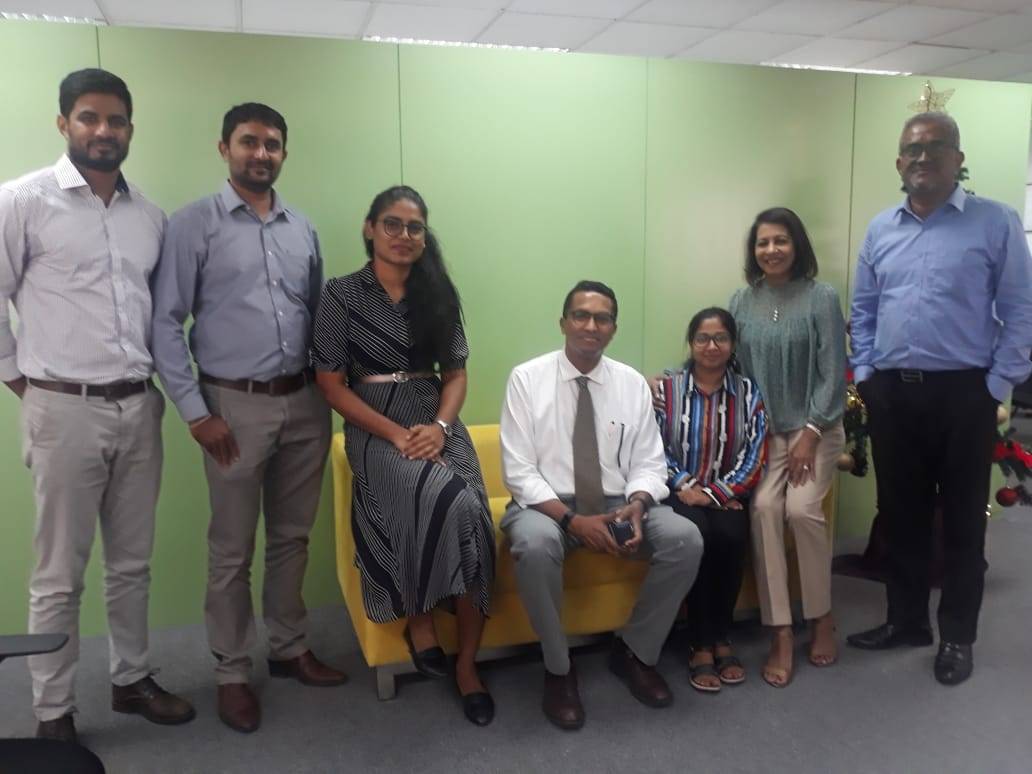
Re- opening the Secretariat for the New Year
The BSL Secretariat commenced work for the year 2022, on Monday 3rd January 2022. Amidst the lighting of the traditional oil lamp and new year sweet meats, the Chair of the Board of Directors, Mr. Dilhan C Fernando, our CEO Mr. Prema Cooray and Director, Mr. Chandrarathna Vithanage visited the office, offering guidance and words of advice.
Mr. Fernando, addressing the staff stated that Sri Lanka’s economic growth over the years has proceeded at the expense of the environment, and the prospect of accelerated growth in a post-war, post covid economy is leading to even greater environmental pressures. Although some success has been achieved in combating environmental deterioration with various programs and reforms, environmental indicators in both rural and urban areas are generally showing a declining trend. It is important to understand that sustaining growth and achieving sustainable development will critically hinge upon how well its environment and natural resources are utilized and managed. He expressed confidence that Biodiversity Sri Lanka’s work in assisting the private sector to make a paradigm shift in efforts to place true and realistic values on Sri Lanka’s natural heritage, setting and then reaching new ambitious targets to value and conserve the fundamental riches of life support systems and the wildlife and people that depend upon them was fundamental to this day and age.
He wished the Secretariat all success in its endeavors throughout the year.

Beyond Borders
On 27 January 2022, ‘Beyond Borders’, a virtual event showcasing and discussing private sector-led efforts contributing towards the protection of critical ecosystems through a livelihood-centered approach, was organized by Biodiversity Sri Lanka (BSL), on behalf of the ‘Supporting Wilpattu National Park and Influence Zone Management in Sri Lanka’ project supported by the German Federal Ministry of Economic Cooperation and Development (BMZ) and being implemented by the Department of Wildlife Conservation in partnership with the Deutsche Gesellschaft für Internationale Zusammenarbeit (GIZ) GmbH.
The event focussed on proven best practices and lessons learnt from the project, of which the overall objective is to better orient the management of the Wilpattu National Park (WNP) and its influence zone towards the development needs of local communities. Producer groups and partnerships are strong elements when strategizing market accessibility for small agricultural producers. Small-scale farmers engaged in the cultivation of cashew and Other Field Crops (OFCs), as well as vegetable and fruit farmers in the WNP’s influence zone, have been mobilized to strengthen market linkages with large-scale private sector agribusinesses.
Providing the opening remarks at the event, Director – Protected Area Management of the Department of Wildlife Conservation (DWC), Mr. Manjula Amararathna stated that “Since the establishment of the DWC in 1949, up to the year 2000, the DWC led a policeman’s role, prohibiting and punishing those who extracted natural resources from Protected Areas (PA) of the country. However, since 2000, the Department’s outlook and attitude towards conservation issues changed with the rest of the world, with the belief that conservation actions should be implemented in collaboration with the surrounding communities, and thereby changed its strategies to suit the new norm. Therewith, the DWC engages in several eco-development activities through its outreach programmes with the objectives of obtaining proactive involvement of the communities towards conservation, reducing the communities’ dependence on resources extracted from PAs and assisting communities of PA buffer zones to improve their socio-economic status through partnership building. Activities being implemented by the project in collaboration with BSL help secure these objectives through various initiatives”.
The Director of Forbes and Walker Fine Foods (Pvt.) Ltd, Mr. Sharada Sosa, delivered a keynote address on ‘The Story of Cashew: Farmers, Middlemen and Escapeways’, while Manager of Dilmah Conservation, Ms. Shamodi Nanayakkara, spoke on ‘Women-led Community Skills Development in the Influence Zones of High Conservation Value Forests’. The event also featured diverse and eminent panelists representing the business sector, science and conservation education, and academia, and was moderated by Advisor to BSL, Ms. Shiranee Yasaratne. Panelists included Lecturer – Applied Entomology, Department of Applied Entomology at University of Rajarata, Dr. Anura Indrajith; Deputy Director Visitor Services Management, Department of Wildlife Conservation, Ms. Chandani Wilson; Consultant/Agricultural and Business Development Specialist of BSL, Mr. L. P. D. Dayananda; and Technical Head, Fresh Produce, John Keells PLC, Mr. Nirmal Hettiarachchi.
A network of over 85 private sector members, BSL has been conducting learning events, roundtable discussions and technical capacity building programs on various topics in line with its objective to promote national cooperation and the exchange of ideas and information relating to biodiversity conservation. The scope of this objective was broadened further recently to encompass a wider variety of topics which have influence and impacts on as well as depend on ecosystems and the environment at large.
The project “Supporting Wilpattu National Park and Influence Zone Management in Sri Lanka” is implemented by the Department of Wildlife Conservation of the Ministry of Wildlife and Forest Conservation and the Deutsche Gesellschaft für Internationale Zusammenarbeit (GIZ) GmbH, on behalf of the German Federal Ministry of Economic Cooperation and Development (BMZ). The project combines the conservation efforts within the Wilpattu National Park with the sustainable development of its influence zones. The project aims to improve Wilpattu National Park’s management capacity with emphasis on the Park Operations, Environmental and Visitor Use Programmes, in technical and specialist terms, in support of the Wilpattu National Park Management Plan (2019-2024) and targeting to improve the livelihood activities of the local communities, in the terrestrial and marine influence zones of the Wilpattu National park.


















